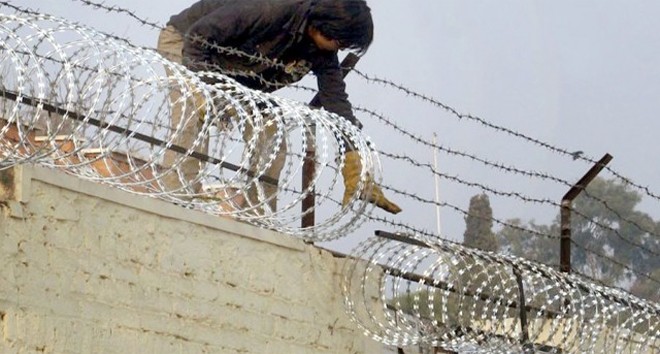
How secure will our schools be after the government prescribed security guidelines?

These days, one question boggling parents of school-going children is how effective security measures will be in schools in the aftermath of the attack on Army Public School in Peshawar.
After the unfortunate incident on December 16, 2014 which claimed the lives of over 130 students and some staff members, the provincial governments across the country announced early winter vacation -- to ensure maximum security in schools.
An early winter break was announced from December 19, 2014 to January 2, 2015.
However, keeping in view the gigantic task of constructing and raising the boundary walls, particularly of public schools, almost all the provincial governments extended the holidays till January 12. Rumour has it that the provincial governments may further extend the winter break. However, at least, the Punjab government has categorically announced that the schools will reopen on Jan 12.
While the private educational institutions in most parts of the country have been operating unchecked and unregulated over the years, it is understandable how difficult it is for the governments to force these institutes to ensure maximum security measures during the ongoing break.
On the other hand, poor security measures at public sector institutions, particularly schools, are not a secret vis-à-vis provision of facilities, including boundary walls, toilets and electricity.
On various occasions in the past, the provincial governments, including the Punjab government, claimed to ensure maximum security measures at educational institutions after different incidents of terrorism. One such unfortunate incident was suicide attack at the International Islamic University Islamabad (IIUI) in 2009 which led to heated debate about security arrangements at the educational institutions.
But, it seems, we only talked about it and actually did nothing much.
This is evident from a number of public schools without boundary walls across Pakistan. And, it is for these boundary-less campuses that the governments had to extend the winter break.
Before the Peshawar attack, there were around 5,000 public schools without boundary walls in Khyber-Pakhtunkhwa and around 2,600 in different districts of Punjab, particularly in the southern part of the province. Likewise, 30 per cent of over 12,000 public schools were without boundary walls in Balochistan. Reportedly, the most pathetic situation is in Sindh, where half of around 49,000 schools are without boundary walls.
Besides public sector institutions, the private schools, colleges and universities have also been directed by the governments to put strict and extensive security measures in place during the ongoing winter break in order to ward off any terrorist attack.
In this regard unambiguous Standard Operating Procedures (SOPs) have also been issued through the Home Departments. If implemented effectively, these SOPs may help minimise threat to schools.
Some of the suggested measures include, raising the boundary walls of educational institutions to up to eight feet, fencing them with razor wire, zigzag entry into the premises through deployment of concrete barriers, deployment of guards after verification of credentials by Special Branch of Police and installation of CCTV cameras system and provision of generator/UPS for ensuring uninterrupted power supply for inside and outside coverage.
Tanveer Ahmed, whose children go to a leading private school, argues that no foolproof security could be ensured without cooperation of members of the society and urges everyone to play their role in this regard. "Everyone now needs to be extra vigilant", he stresses.
For Sidra Sohail, a mother of 10-year old Kashif, the threat is great and she argues that it is primarily the responsibility of the state and school management to provide security to schoolgoing children. She says the government must ensure that the schools follow the SOPs in true spirit and no compromise is made over time.
Better late than never, as they say, time has come to focus on the neglected areas and be well prepared to avert any untoward incident by taking initiatives that are doable.
It is now up to the management of education institutions to ensure maximum security arrangements following the SOPs in order to provide a safe environment to the students and staff.